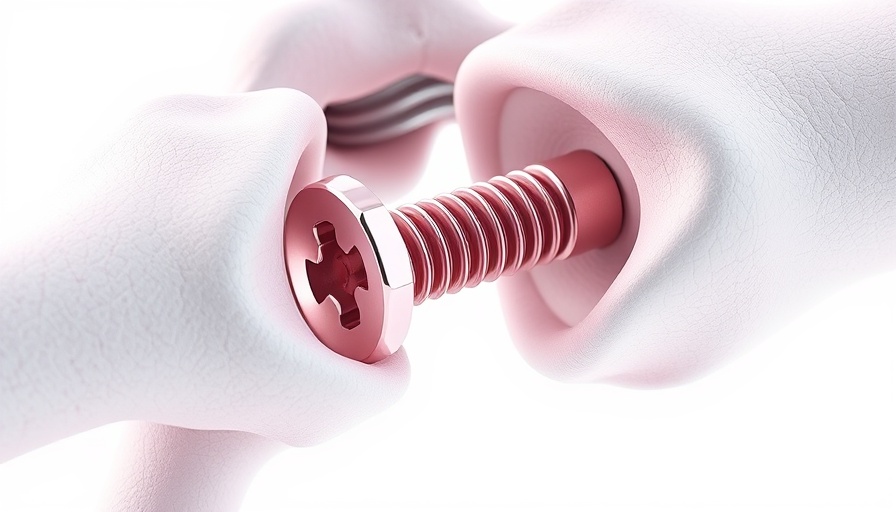
How New Research is Changing Bone Surgery
Recent advancements in orthopedic surgery are reshaping how screws are utilized in bone repairs. A study conducted by the Karl Landsteiner University of Health Sciences reveals a groundbreaking model that predicts screw failure based on detailed bone structure analysis. This new approach may drastically reduce complications associated with loose or broken screws, a common issue faced by surgeons.
The Science Behind the Study
The research utilized high-resolution micro-computed tomography (micro-CT) scans to analyze 100 pig bone samples—often regarded as comparable to human bone. The study examined the bones under ten different load scenarios, focusing on two critical factors: bone volume and bone volume fraction. These parameters have shown to explain up to 90% of the variation in screw stability, providing vital information for surgeons when planning procedures.
Breaking Down the Findings
Understanding how screws respond to the everyday stresses of life is essential for successful implantation. Ass.-Prof. DI Dr. Andreas Reisinger, who led the study, noted that the researchers successfully developed statistical models predicting screw failure rates with remarkable accuracy. By measuring bone characteristics and comparing them to the force required for screw failure, the team identified optimal placement techniques for screws that could enhance stability across various loading scenarios.
A Glimpse into the Future of Orthopedic Surgery
With these findings, the future of orthopedic surgery looks promising. Surgeons will now have the tools to make more informed decisions about screw placements by analyzing bone integrity prior to surgery. This shift not only aims to increase the success rates of implants but also to minimize the incidence of post-operative complications, such as infection or the need for additional surgeries.
Application in Clinical Settings
The implications of this research extend beyond academic interest; it translates directly into improved patient outcomes. More reliable models for screw placement will transform standard practices in orthopedic surgery. Surgeons can tailor their operations to fit the unique anatomical and structural characteristics of each patient's bones, enhancing personalized medical care.
Importance of Continued Innovation in Healthcare
This research underscores the significance of technological advancements in healthcare. As methods like micro-CT imaging continue to evolve, they pave the way for deeper insights into human anatomy, leading to more precise and effective surgical methods. The medical community must continue to embrace such innovations to improve the quality of patient care and surgical success.
Conclusion
The newly developed predictive models mark a significant step forward in bone surgery, promising to enhance the reliability of screw placements and the overall success of orthopedic procedures. As the medical field pushes boundaries through research and innovation, both surgeons and patients could benefit greatly from these advancements, leading to a new era of safer, more effective surgical options.
 Add Row
Add Row  Add
Add 




Write A Comment